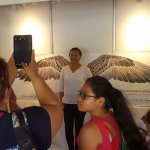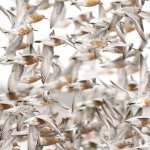From August 20th to 23rd, the shrimp farming industry met in Honduras for the thirteenth Central American Aquaculture Symposium (SIMCAA by its Spanish acronym) – and for the second time, we brought our shorebird wings and set up a booth at the trade show. The aquaculture symposium is an opportunity to get closer to the industry and work on building a relationship of trust, where producers, shorebird conservationists, government institutions, and collaborators can work on proposals for shorebird-friendly practices. 45% of the Arctic-breeding migratory shorebird species are experiencing population declines, and shrimp farms in the Gulf of Fonseca can make a difference in stopping these declines by implementing best practices.
During the symposium, we shared information with visitors about our latest understanding of how shorebirds use shrimp farms, and the different ways they use these habitats for resting, feeding, nesting, and other important functions. We also explained the main threats shorebirds are facing. One important element that implies a more direct responsibility on the part of the shrimp industry is the loss of critical roosting, feeding, and nesting habitat for shorebirds. WHSRN, National Audubon Society, and Quetzalli Nicaragua conducted an analysis of shorebirds and shrimp farms, and found that the habitat that has been transformed the most is natural salt flats. These areas used to play a fundamental role as temporary roosting and feeding sites during high tide. In the remnant salt flats that remain, we have found evidence of nesting Wilson’s Plovers (Charadrius wilsonia), Black-necked Stilt (Himantopus mexicanus), and Southern Lapwing (Vanellus chilensis), or signs of foraging by species more associated with these habitats, such as Short-billed Dowitcher (Limnodromus griseus) and Stilt Sandpiper (Calidris himantopus), among others. In the process of this change in land use, the dikes between shrimp ponds became the roosting sites, and recently harvested shrimp ponds became the temporary feeding sites.
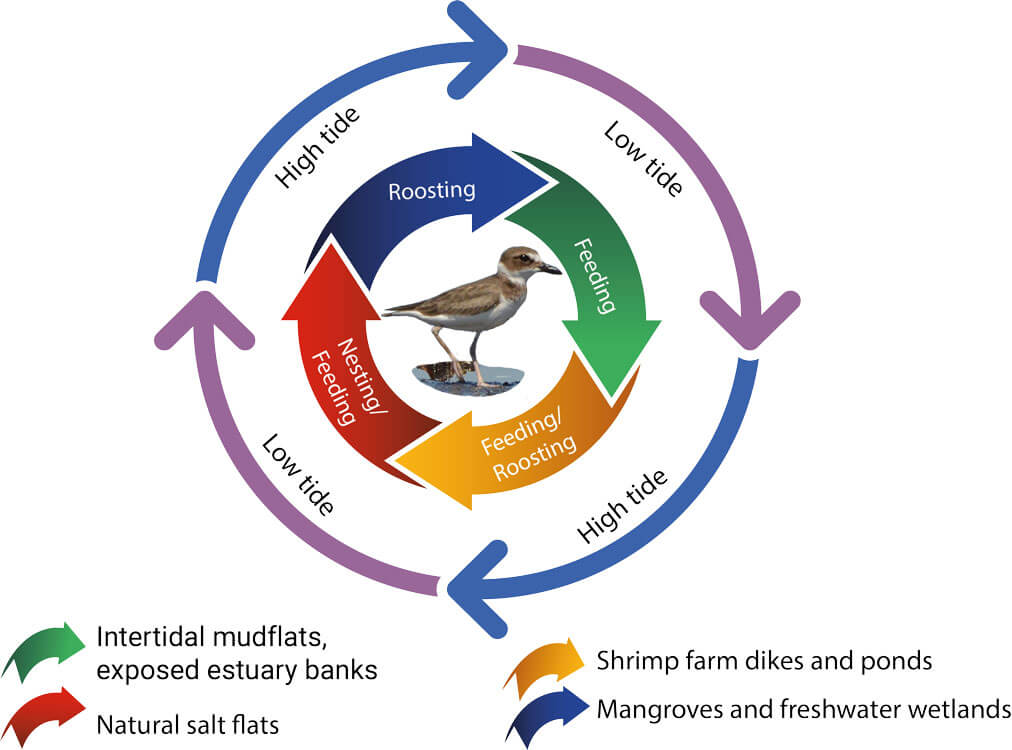
The daily cycle of a shorebird in the Gulf of Fonseca. Diagram: Salvadora Morales.
Another threat is human disturbance to shorebirds, which the shrimp industry can also help abate by reducing disturbance at shorebird roosting sites. It is essential to understand the cycle of how shorebirds use the boundaries between shrimp ponds, and when possible, work with the shrimp farmers to share this knowledge and plan measures together to reduce disturbance in these key resting areas. Finally, another threat we have documented is habitat degradation, which requires efforts at the level of each individual shrimp farm and on a larger landscape scale. We explained all of this to visitors that came to our shorebird stand at the Symposium.
We had the opportunity to talk with Ismael Wong, general manager of SeaJoy | Cooke, about possibilities of working together. SeaJoy is the owner of two of the shrimp farms that we have monitored in the Delta del Estero Real, which have helped generate important information about shorebird use of shrimp farms. One of them, Finca Acuícola Real, has stood out so far as one of the most important farms because of the large concentration of shorebirds that use it as a temporary roosting and feeding site. SeaJoy also owns the only organic shrimp farm in the Gulf of Fonseca.
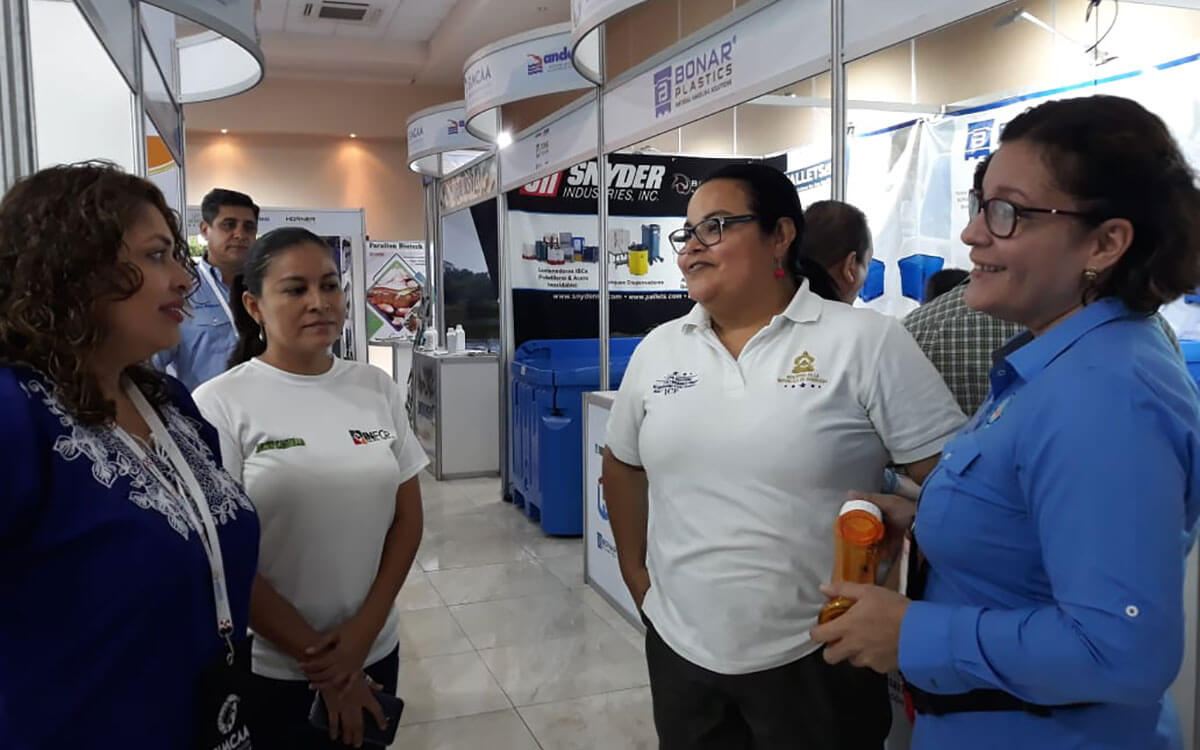
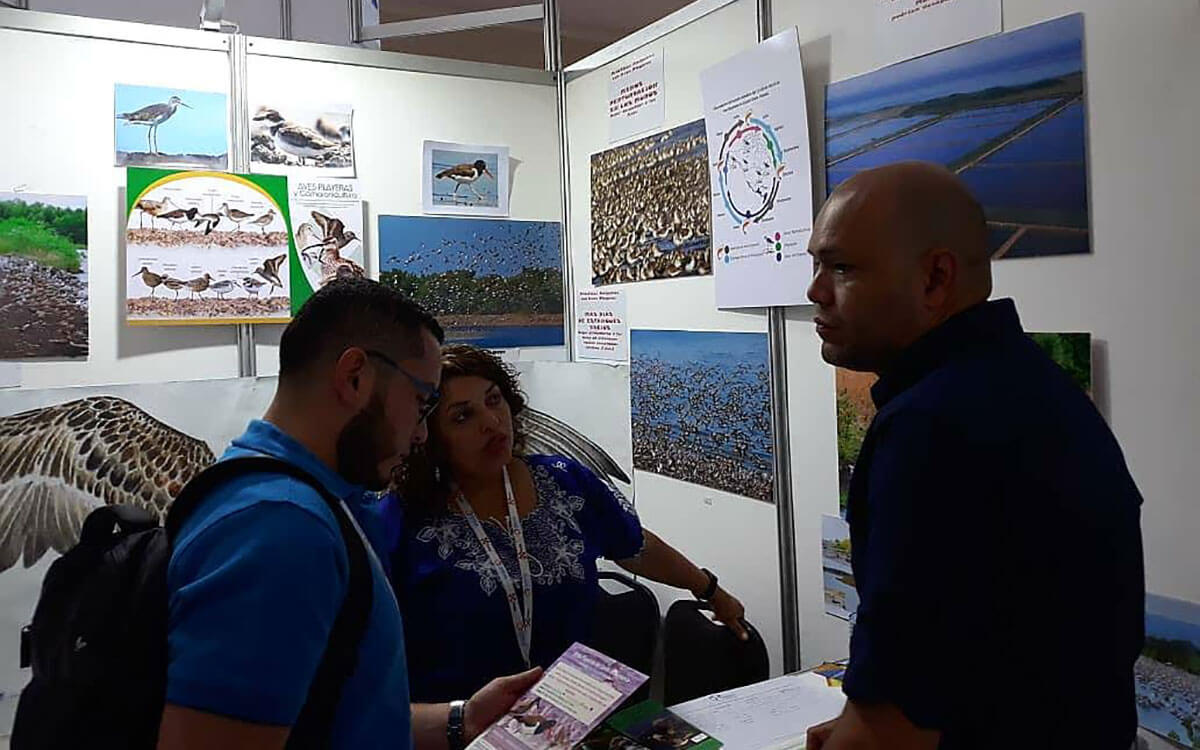
Left: WHSRN’s Salvadora Morales speaks with representatives of Honduras’ National Institute of Forest Conservation, Protected Areas, and Wildlife. Right: The Best Practices team from SeaJoy visits the shorebird stand at the symposium. Photos courtesy of Salvadora Morales.
“What can we do for the shorebirds?” asked Bill Hoenig, Vice President of Sales and Operations for Delta Blue Aquaculture, when he arrived at our booth after receiving our invitation. Bill was a speaker at the symposium, and is an advisor to the Best Aquaculture Practices (BAP) standard. Together we contemplated several different ways the industry could help shorebirds. One of these could be working together with organizations certified by the Global Aquaculture Alliance, whose best practices currently include birds in a general way. A future goal is to more specifically include migratory birds in these standards, but nonetheless this symposium has been a key event to begin these important relationships.
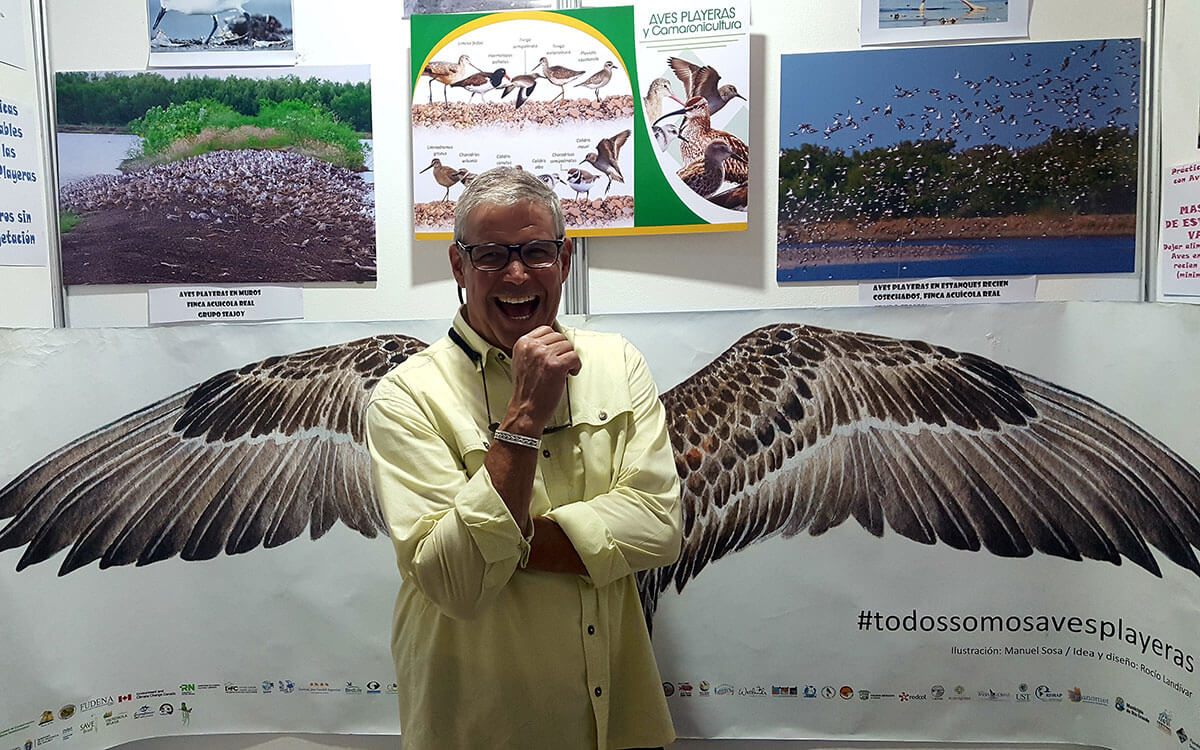
Bill Hoenig, Vice President of Sales and Operations for Delta Blue Aquaculture, an advisor the Best Aquaculture Practices (BAP) standard, and a speaker at the symposium. Photo: Salvadora Morales.
During the symposium, Gabriel Biguria, of the shrimp production company Acuamaya in Guatemala, presented about global production trends and changes in food consumption. “The millennial factor” has created a market that values the planet, wants transparency, that has redefined what is healthy, and among other things demands responsible and sustainable products. Biguria explained that one of the key elements for competing in the industry is connecting with these markets, and moving towards a collaborative model that includes companies, suppliers, unions, governments, universities, and international organizations. This scenario opens doors for stronger corporate social and environmental responsibility programs. And where do shorebirds fit in? Shorebirds connect the dots on a hemispheric scale, to create a win-win relationship between shrimp producers that support shorebirds in the tropics, markets where migratory shorebirds nest, feed, and stop to rest, and the organizations promoting shorebird conservation by working together to reduce the population declines these migratory and resident birds are facing.
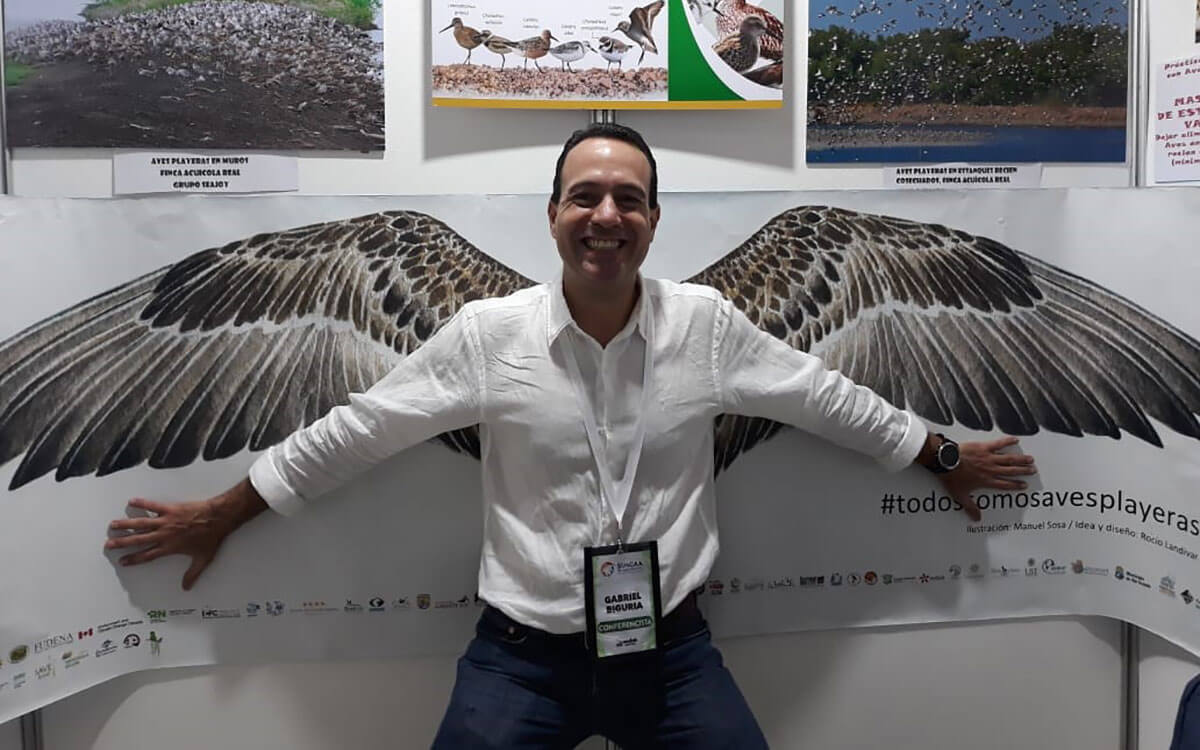
Gabriel Biguria, Vice President of Sales and Marketing for Grupo Acuamaya, who presented during the symposium about global production trends, changes in food consumption, and how “the millennial factor” has created a market that values the planet, wants transparency, has redefined what is healthy, and demands responsible and sustainable products. Photo: Salvadora Morales.
For more information, please contact Salvadora Morales, Conservation Specialist with the WHSRN Executive Office.
Cover Photo: WHSRN’s Salvadora Morales at the entrance to the thirteenth Central American Aquaculture Symposium in Choluteca, Honduras. Photo courtesy of Salvadora Morales.





